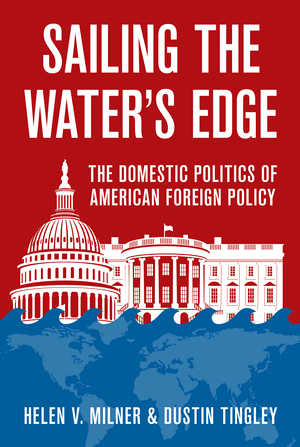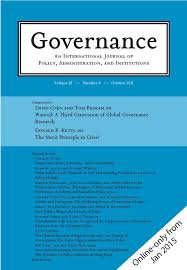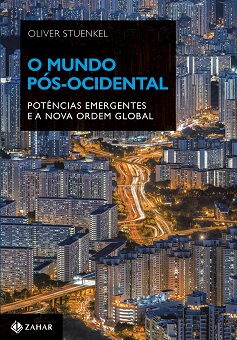
Book review: Sailing the Water’s Edge. The Domestic Politics of American Foreign Policy. By Helen V. Milner and Dustin Tingley. Princeton University Press, 2016. 352 pages, $27.95 (paperback)
Published: Governance, Volume 29, Issue 4, October 2016. Pages 587–588
http://onlinelibrary.wiley.com/doi/10.1111/gove.12240/full
DOI: 10.1111/gove.12240
——
Most studies of US-American foreign policy embrace the notion that the president is the sole force in devising policy, able to implement whatever ideas he or she wants. Politics, the saying goes, stops at the water’s edge, and the United States supposedly speak with one voice to the rest of the world. For example, as the specter of a Trump presidency is being discussed ever more seriously, some policy analysts worry about the outbreak of World War III, implying that he’d be able to determine US international strategy without facing any constraints. There are some fairly obvious reasons for this: the president and the executive branch often possess privileged access to intelligence and are indeed somewhat more immune to public and/or interest group pressure than the legislative branch, particularly in the second term. This has led to the rise of the literature of the “two presidencies”, which argues that because of the requirements of secrecy, timeliness and information, presidents are more able to set the agenda in foreign than domestic policy and to move forward on it without congressional interference.
Indeed, many International Relations theories suggest that the constraints on presidents and foreign policy lie mainly in the international system and other countries. Realism argues that countries behave according to their relative power positions and the threats that other states pose to them. But realism also admits that for a better understanding of foreign policy, one has to look not only at these two components but also at the ability of leaders to extract and direct resources from their societies to foreign policy ends. It is this second aspect that Sailing the Water’s Edge analyzes. Rather than looking abroad to explain foreign policy decisions, Milner and Tingley assess under what conditions the president can get the resources he needs to fashion foreign policy in the direction he desires. To great extent, the authors say, the president’s ability to obtain his desired foreign policy depends on negotiations with Congress as well as public opinion and interest group support.
This matters far more than mainstream IR literature recognizes: close to a third of the time when the president endorses a crucial foreign policy vote, he is unsuccessful in obtaining congressional approval. While the president can, of course, try to circumvent Congress, this shows that we cannot make sense of US foreign policy without a keen understanding of domestic politics — a perspective the authors call “intermestic.” For example, the President may prefer one policy measure (say, sanctions or aid) but opt for another (e.g., drone strikes) because of this inability to obtain congressional approval for his first choice of action. These insights sit uncomfortably with talk of Presidents’ ‘grand strategy’. After all, as Adam Gopnik recently pointed out in The New Yorker, “we talk solemnly about “his Presidency” (so far), just as people in the Middle Ages talked about “his papacy”, not as a powerful office but as an epoch of spiritual leadership. (…) it means that we expect our Presidents to shape the meaning of our times.” Something similar is true in the realm of international affairs, where a US president’s world view is thought to shape the global agenda.
Yet Milner and Tingley show that since presidents tend to have more capability to shape the use of military and national intelligence instruments than other instruments, they may opt for military instruments of statecraft not because they believe it is best, but because it is the best option available given domestic constraints and because ideological divisions are relatively low — that, in turn, may explain the militarization of US foreign policy, and the fact that the Department of Defense is today see as more powerful than the State Department. More notable still, despite President Obama’s pledge that military force would not be his central foreign policy instrument, he will most likely be the first president in decades to have been at war every single day of his eight years in office.
As the authors point out,
[Obama’s] inability to make use of foreign aid, trade, or immigration as instruments of foreign policy has left Obama with only military means to employ. And despite his desire not to use these types of instruments, as evidenced in his quote, he has been forced on many foreign policy issues to consider these instruments and often to employ them. There are numerous examples: the military surge in Afghanistan in 2009, the air support campaign in Libya in 2011, Obama’s desire to not intervene in Syria but the recent decision to bomb there, the bombing in Iraq and addition of US troops to deal with the terrorist group ISIS in 2014, the drone attacks in Africa and the Middle East throughout his presidency, and even the sending of US troops to deal with the Ebola crisis in Liberia in 2014. In addition, Obama has been able to implement sanctions in a number of cases, but especially on the Russians over the Ukrainian crisis in 2014. Our theory sheds light on why this tendency to use military and coercive policy was likely, despite the president’s preferences.
In the same way, the authors find that presidents tend to have more difficulties to articulate foreign policy strategies with a significant redistributive impact — such as trade agreements, immigration policy or, to a lesser degree, aid policy. Allowing a greater amount of immigrants to enter the country will benefit groups well-endowed with capital and skills, while creating some disadvantages for unskilled workers. The more concentrated the losses are on one single group, the greater the political hurdles are. That explains why ending the embargo against Cuba was so difficult (those who rejected it were concentrated in Florida), while maintaining the Iraq War was easier (the soldiers’ families were spread around the country).
Sailing the Water’s Edge is equally insightful when it comes to assessing the role of interest groups. Milner and Tingley argue that when organized groups can obtain highly concentrated benefits or may have to pay highly concentrated costs, there will be fierce lobbying. Interest groups will also have an incentive to collect information and lobby Congress in order to overcome the executive’s informational advantages. These distributional battles make policy highly contested and polarize debate so that it is more costly for presidents to realize their desired policies.
In separate chapters, the authors assess the role of Congress, the bureaucracy and public opinion. In a way, they thus provide an ideal handbook for all those actors as they design ways to influence foreign policy. The book will also be of great interest to foreign embassies that seek to influence decision-makers in Washington.
Sailing the Water’s Edge is an important contribution not only to the debate about US-foreign policy, but to foreign policy in general, for there is little reason to believe that the domestic factor matters less when seeking to analyze China’s, Germany’s or Brazil’s foreign policy. While a growing number of scholars from around the world have begun to study the politics of foreign policy, this is often not done in a systematic way. For example, few IR scholars have studied the domestic distributional consequences of, say, Brazil’s stance on trade, immigration or providing aid. Rather, this topic is ceded to economists, who care little about foreign policy. Bringing foreign policy back into international political economy will be increasingly necessary to make sense of the politics of foreign policy around the world.
Read also:
Latin America confronts the United States
US Military Bases, Quasi-bases, and Domestic Politics in Latin America
Book review: “Dragon in the Tropics: Venezuela and the Legacy of Hugo Chavez”











